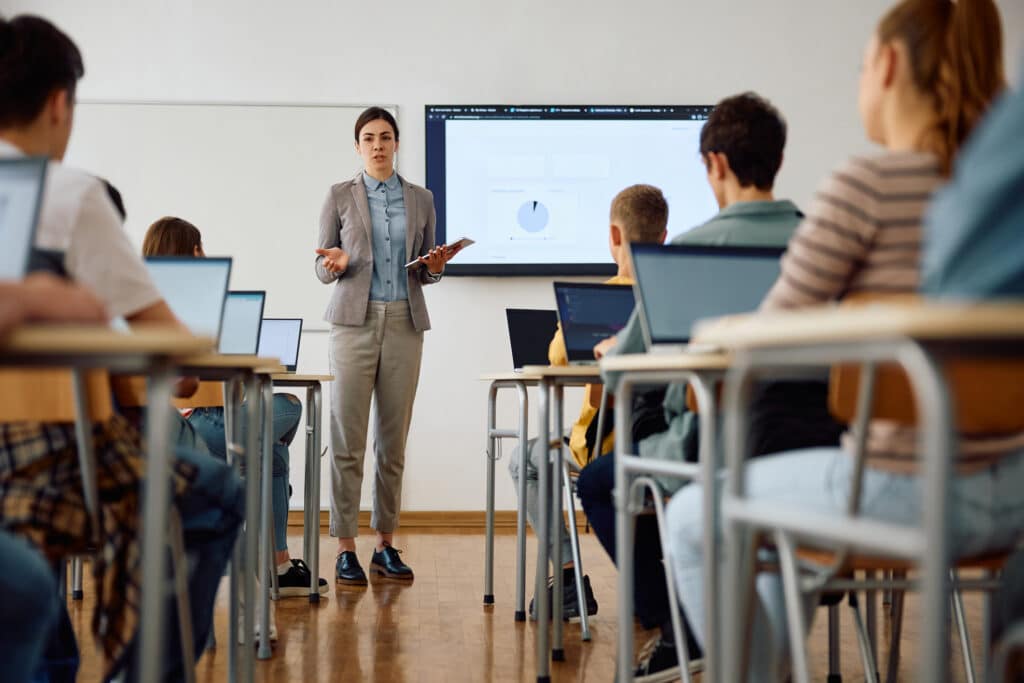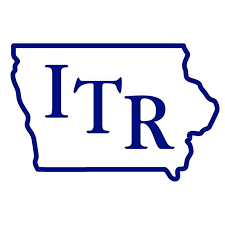Uncertainty continues as arts community rises from pandemic’s grip
As shows are scheduled and events return, organizers wait for audiences to come back

Often for the first time since before the coronavirus pandemic began, performing arts centers are scheduling in-person performances, live events are returning and staff who were furloughed are returning to work.
But as the arts and culture sector breathes back to life, there’s wariness over how the public and audiences will react as the world reopens.
The Centers for Disease Control and Prevention announced earlier this month that all people who are fully vaccinated against the virus could shed their masks and resume most normal activities, both for gatherings indoors and out. As of May 24, more than 1.34 million Iowans, or about 42% of the state’s population had been fully vaccinated.
Jeff Chelesvig, CEO of Des Moines Performing Arts, said people should be cautious when it comes to how quickly touring groups resume their normal schedules, and how audiences will respond.
“It has to be at a place where they are comfortable touring, and that is coupled with the eagerness of the audience to come back,” he said. “So it’s kind of challenging and I don’t have any real answers.”
In-person shows announced
Des Moines Performing Arts announced its first in-person live performances in more than a year earlier this month. More announcements are expected in the coming weeks.
What that will look like as far as capacity is still “a work in progress,” Chelesvig said.
“For large-scale shows like Broadway and popular concerts, the only way for those to make sense financially is to have full capacity,” he said. “That’s where we’re going to have to see how things go with following the guidelines we get from the government and relying heavily on the medical community here in Iowa to help guide us through this.”
Hoyt Sherman Place has also begun announcing live, in-person performances, and things are looking good for 2022, said Robert Warren, the performing arts center’s executive director.
“Our 2022 calendar is about as booked solid as it could ever be,” said Warren, who expects shows to be at 100% capacity this fall.
He said the question is more about the comfort of audiences than performers when it comes to theaters opening back up.
“I participate in three difference national advocacy groups for the performing arts, and the fact that New York City and Broadway are reopening at capacity July 1, certainly if there’s any hesitancy, it will be on the part of the consumer. But the artists, the cities and the talent are ready to be back on the stage,” Warren said.
The Des Moines Playhouse announced its lineup for its next season, which begins in September, and David Kilpatrick, the nonprofit theater’s executive director, said every show will grow in audience size as comfort levels rise in returning to live theater.
“We are not expecting people sitting side by side unmasked until December at the earliest,” he said.
At the Science Center of Iowa, Curt Simmons, president and CEO, said they are adding two days a week that the center will be open beginning in June, with applications for summer programming already at pre-pandemic levels. They hope to return to full pre-pandemic activities by early 2022.
Virtual vs. in-person
Des Moines Performing Arts has relied on free, virtual programming to keep engaged with its audiences. Three virtual shows for families this spring drew more than 50,000 households.
“I think that virtual programming has had its ups and downs,” Chelesvig said. “I think that many people have found it to be a replacement, a good kind of substitution, but there really is no way to compare what happens in a virtual situation to a live performance, and so I think certain elements of what we have done will continue, because there are still likely going to be some wonderful programming, especially for young people, that we can do.”
Kilpatrick said a lesson the Playhouse learned during the pandemic is the benefit of streaming its performances.
“We’re theater and we do live theater and we’re going to entertain even if it’s only 45 people,” he said. “But we started getting into some streaming options and realized streaming does not dilute what we do.”
Using state grants received in December, the Playhouse installed cameras to livestream all its performances.
From reaching people in the area who can’t attend performances to reaching family members from across the country, streaming creates greater accessibility, Kilpatrick said.
“That, to me, is why we see streaming as permanent for us,” he said. “It is about accessibility and … allowing them to connect to us closer.”
Keeping the doors open
Without revenue coming in from ticket sales, performing arts venues have had to rely more on donors, budget reserves and government assistance to stay in operation.
“The incredible generosity” of its donors has been critical for Des Moines Performing Arts, Chelesvig said.
“They have really been stepping up and helping to keep us going,” he said.
The organization has also had to dip into its reserves, and it submitted a grant application through the Small Business Administration’s Shuttered Operators Grant Program, but won’t know whether its application will be approved until the end of this month, Chelesvig said.
Des Moines Performing Arts, which had reduced its staff by 40%, is also beginning to bring some of those people back as programming ramps back up, Chelesvig said.
According to Kilpatrick, the Playhouse has survived the past year thanks to “tremendous support” from the state, Bravo of Greater Des Moines and the Iowa Arts Council. The Playhouse also received assistance from the federal Payroll Protection Program.
Its staff members also reduced their pay to help make ends meet, he said.
At Hoyt Sherman, membership renewals remained consistent, and the theater received a few small loans through the Small Business Administration, some emergency funding through the Iowa Department of Cultural Affairs, and a PPP loan of $165,000.
Hoyt Sherman lost 85% of its revenue overnight when it had to shut down after the pandemic started. Instead, it shifted its focus to the mansion restoration and renovation project, which received $350,000 in state historic tax credits and a $100,000 donation from the Dahl Trust.
“How would you even think about getting through a year?” Warren said of the precipitous drop in revenue. “That’s what we all had to face in the arts community. Fortunately for Hoyt Sherman Place, we had the museum and the art gallery to keep us busy.”
Hoyt Sherman’s full-time staff has remained employed throughout the pandemic, but the part-time events staff, such as valets, bartenders, stagehands and merchandise vendors, remain furloughed, he said.
Shifting resources amid uncertainty
“We’re still very much in a period of unknown,” said
Sally Dix, executive director of Bravo of Greater Des Moines. “I think that’s the kind of thing many of these organizations are still struggling with. Is it really over? And if it’s really over, what does that mean?”
Bravo, which provides grants funded by hotel/motel tax revenue, has invested more than $6 million in the regional arts and cultural sector over the past year, the highest amount ever, Dix said.
“We have really worked hard to push out as much funding as possible to put some gas in the tank for the cultural organizations while we’re in this holding pattern,” she said.
That will leave Bravo relying even more heavily on hotel/motel tax collections in real time, Dix said.
Hotel/motel tax collections run about 90 days behind, so Bravo won’t start to see the benefits of any recovery until probably June of this year, and possibly not until September.
With declines in hotel/motel tax collections over the past year as hotel occupancies remain well below normal levels (currently 40-45%, compared with 60-65%), Bravo is projecting a budget for its next year that is below its 2019 revenue, Dix said.
With the revenue shift, Bravo has changed how it awards grants from a projection-based model to what it will know it will have, she said.
“We just pivoted a little … in how we make our investment decisions to provide stability so we’re only awarding what we know we have, and we believe that’s a benefit to our cultural partners to know once they receive something from us it’s a done deal,” Dix said.
The future
Even when live performances return, there will be less room for error if audiences don’t return as quickly as venues may want, Dix said.
“Many of these organizations spent deeply into their cash reserves, so the risks may not necessarily be riskier but the fall could be harder because there’s not as much cushion there for some organizations,” she said.
While he’s optimistic, Kilpatrick is staying realistic that the recovery could be a long-term venture.
“We’d like to get our salaries back up to the level they were before, but that’s going to take a little bit of time,” he said. “We’d like to have more than 100 people see a show each night but that’s going to take some time, and we’d like to be doing more but that’s going to take some time.”
The Playhouse seats 412 people, but right now is only selling 100 seats to keep audiences safe. That won’t change anytime soon, Kilpatrick said.
“We’re going to be slow and careful,” he said.
Last summer, the Playhouse tested a drive-in theater format where small shows were presented to socially distant audiences in the parking lot. A similar concept is being planned for this summer, Kilpatrick said.
“We’re going to build a tent in our parking lot and we’re going to do three shows this summer,” he said.
Kilpatrick said it’s possible outdoor theater will become a permanent fixture for the Playhouse.
“We may decide this is our future, [but] we’ll have a better evaluation at the end of the summer,” he said.
In addition to the live performances being scheduled for this fall, Chelsvig said Des Moines Performing Arts will be announcing “exciting work that we’re going to be doing outdoors this summer.”
The Civic Center is also working on improvements, such as upgrades to its air filtering system and touchless transactions to help audiences feel safer when they return, he said.
The Science Center has continued to operate with limited hours and capacity. The center is only open Thursdays, Saturdays and Sundays at 25% capacity. Beginning in June it will be open Wednesday through Sunday, Simmons said.
With the recent CDC guidance, the Science Center is also making mask wearing optional, although it will encourage the practice among visitors. All staff will continue to wear masks, Simmons said.
Demand for summer camps is also returning to normal, Simmons said.
“Our sales this year are tracking as they would in a typical year,” he said. “We’re not seeing any real COVID impacts for our summer camp programs.”
Some schools have already resumed class field trips and those are expected to continue to pick up in the fall, he said.
After reducing staff in March 2020, part-time staff is being brought back, and full-time positions are being filled, Simmons said.
“We’re being very slow and cautious in bringing back full-time staff until we get our feet under us with more of a recovery from COVID,” he said.
Although some uncertainty remains as the arts and culture sector begins to move beyond the pandemic, the ability to plan and schedule events and performances is a welcome reprieve from the unknowns that dominated much of 2020.
“I’m not going to lie to you, I’ve been through several tough crises in my performing arts career, including 9/11,” Warren said. “I was working at the Kennedy Center and the plane hit the Pentagon [nearby] and the next day was supposed to be our 30th anniversary celebration of the opening of the building. This has been a tough one.”










